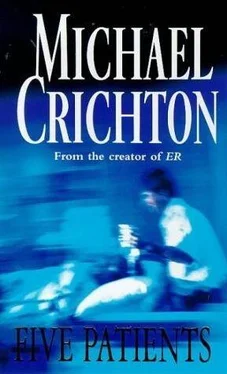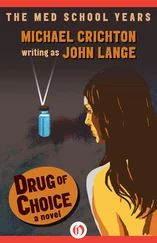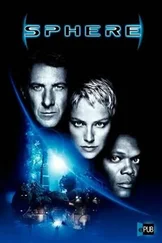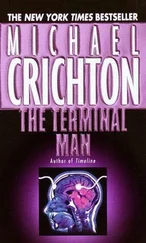Michael Crichton - Five Patients
Здесь есть возможность читать онлайн «Michael Crichton - Five Patients» весь текст электронной книги совершенно бесплатно (целиком полную версию без сокращений). В некоторых случаях можно слушать аудио, скачать через торрент в формате fb2 и присутствует краткое содержание. Жанр: Триллер, на английском языке. Описание произведения, (предисловие) а так же отзывы посетителей доступны на портале библиотеки ЛибКат.
- Название:Five Patients
- Автор:
- Жанр:
- Год:неизвестен
- ISBN:нет данных
- Рейтинг книги:5 / 5. Голосов: 1
-
Избранное:Добавить в избранное
- Отзывы:
-
Ваша оценка:
- 100
- 1
- 2
- 3
- 4
- 5
Five Patients: краткое содержание, описание и аннотация
Предлагаем к чтению аннотацию, описание, краткое содержание или предисловие (зависит от того, что написал сам автор книги «Five Patients»). Если вы не нашли необходимую информацию о книге — напишите в комментариях, мы постараемся отыскать её.
Five Patients — читать онлайн бесплатно полную книгу (весь текст) целиком
Ниже представлен текст книги, разбитый по страницам. Система сохранения места последней прочитанной страницы, позволяет с удобством читать онлайн бесплатно книгу «Five Patients», без необходимости каждый раз заново искать на чём Вы остановились. Поставьте закладку, и сможете в любой момент перейти на страницу, на которой закончили чтение.
Интервал:
Закладка:
Certainly the academic hospitals will have to abandon what Dr. Knowles calls "the present defensive isolation… in a bastion of acute curative, specialized, and technical medicine." The impact of this on the inner workings of the hospital itself may be extensive, and beneficial.
In 1896, the intern Harvey Gushing referred to the MGH as "this little world of ours"-and he meant precisely that. It was a little world, and it was "ours"; it belonged to the doctors, not to the patients. Doctors were a permanent fixture in this world. The patients were transients who came and went. (Patients are well aware that the hospital is for doctors, and not for themselves. They frequently report that they feel like "specimens in a zoo." Indeed, nearly every literate person who has recorded his experience in an academic hospital, from the late Philip Blaiberg on down, has mentioned this disturbing association.)
Initially the hospital was designed to be a little world for the patients, supplying all their needs. In those days, there were few resident physicians. But the hospital has evolved into a complete world for doctors as well. Indeed, it would be surprising if it did not, for there is one house officer for every four patients, and the house officers spend almost as much time in the hospital as the patients.
For a resident, the completeness of the little world-with its dormitories, libraries, cafeterias, coffee shops, chapel, post office, laundry, tennis and basketball courts, drugstore, magazine stand- combined with the intensity of training (the average resident spends 126 hours a week in the hospital) can have some peculiar effects. It is quite possible to forget that the hospital stands in the midst of a larger community, and that the final goal of hospitalization is reintegration of the patient into that community. In this respect, the hospital is like two other institutions which have a partially custodial function, schools and prisons. In each case, success is best measured not by the performance of the individual within the system, but after he leaves it. And in each case there is a tendency to view institutional performance as an end in itself.
This is true for both doctors and patients. The ideal of the physician-scientist, the clinician-researcher, is very much a product of academic hospital values. The educational process designed to mold this product has some paradoxical aspects. One may reasonably ask, for example, what is a medical student being trained to become?
Without doubt the answer is: a house officer in a teaching hospital. A good medical student graduates with all the necessary equipment: a background in basic science, some clinical experience, familiarity with the journals, and an academic orientation.
What, then, is a house officer being trained to become? The answer is, an academic physician specializing in acute, curative, hospital-based medicine [A student of my acquaintance, now a psychiatric resident, endeared himself to the house staff of hospitals where he was a student by doggedly asking each resident he met to define, in a simple sentence, the difference between neurosis and psychosis. He concluded that 15 per cent had some vaguely appropriate notion; the rest were appallingly wrong. The fact that a doctor does not know the difference between neurosis and psychosis does not necessarily mean he will be a poor physician; a doctor who cannot articulate these distinctions may conceivably handle them deftly in his practice. But it is a clear indication he has not had much training in behavior, and the question is whether he ought to have such training and whether his patients would benefit from the training]. This is heavily scientific and not very behavioral; it must be so. (As the visit said: "Tell me about his kidneys, not his marital troubles." And the visit was right: the hospital is geared to treat his kidneys, and not his arguments with his wife.)
But the great majority of house officers do not become academic physicians, at least not full time. They go out into the community to begin, in many respects, a totally different kind of practice from any they have ever seen. They are shocked to discover that 70 per cent of their patients have no identifiable illness; they are besieged and pestered by "crocks"; they have relatively few acutely ill patients, and relatively few hospitalized patients. They are, in short, called upon to practice a great deal of behavioral art and relatively little science.
These doctors suffer from what Grossman calls "acute organically trained syndrome." The rationale for giving them the training they got, as preparation for the work they would be doing, was formerly couched as "if they can handle the problems they see in the hospital, they can handle anything." It is obviously untrue, except for those diseases that are scientifically understood and medically treatable; patients with other complaints may get a more sympathetic ear from their next-door neighbor.
*This same argument has been made by Peter Drucker concerning undergraduate, liberal arts colleges, where he points out that professors of English or History are not training liberal humanitarians or anything else so noble-they are training future professors of English and History.
Underneath it all is a sense that modern, scientific medicine can be taught, but the vague, amorphous "art" cannot be taught in the same way. This is true, but it does not mean it cannot be taught at all. Nor does it mean that simply watching the visit examine five or ten patients a week is a sufficient background in how to deal with a patient's psyche.
What a medical resident knows about science he has gotten from intensive courses, rounds, seminars, and journal reading; what he knows about behavior, psychiatry, psychology, or sociology depends on what he has managed to pick up as he goes along. This generally amounts to pitifully little.* It is hard to estimate the amount of time a doctor spends studying behavioral science during his years as a student, intern, and resident. Formal training-lectures as a student, rotations as a clinical clerk, social service and psychiatric rounds as a house officer-probably account for no more than 1 to 2 per cent of his total time; the extent of informal training is impossible to guess.
There is now a growing movement within medical education to provide more formal training in behavior, but there is also formidable opposition. As John Knowles has pointed out, medicine gained acceptance within the university as a valid discipline not because of its advances as a social science, but because of its discoveries as a natural science. For nearly a century, natural science has been the paydirt, and the behavioral art has taken a subordinate position. Reversing the trend of a century will take some doing.
Of course, the hospital has an out-patient department and emergency ward, where the interface of hospital and society is more sharply seen. But the addition of community clinics, separate from the hospital, will almost certainly change the psychological set of doctors working within the physical setting of the hospital itself.
It is too early to know whether the satellite clinics are going to work. The question of physician acceptance is one problem; the question of community acceptance another. But if they do not work, something else must be found, and at this time it appears social pressures are sufficiently intense to guarantee such a search for new delivery systems.
The concept of a "patient-oriented hospital" is fashionable at the moment. The phrase is widely used, though the idea is shopworn. People have recognized for a long time-at least twenty-five years-that hospitals are designed for the patient's needs only when those needs do not conflict with the doctors' convenience. Nor is there any mystery about why this is so. Whenever a new hospital is built, it is the doctors who are consulted on design requirements, not the patients.
Читать дальшеИнтервал:
Закладка:
Похожие книги на «Five Patients»
Представляем Вашему вниманию похожие книги на «Five Patients» списком для выбора. Мы отобрали схожую по названию и смыслу литературу в надежде предоставить читателям больше вариантов отыскать новые, интересные, ещё непрочитанные произведения.
Обсуждение, отзывы о книге «Five Patients» и просто собственные мнения читателей. Оставьте ваши комментарии, напишите, что Вы думаете о произведении, его смысле или главных героях. Укажите что конкретно понравилось, а что нет, и почему Вы так считаете.









